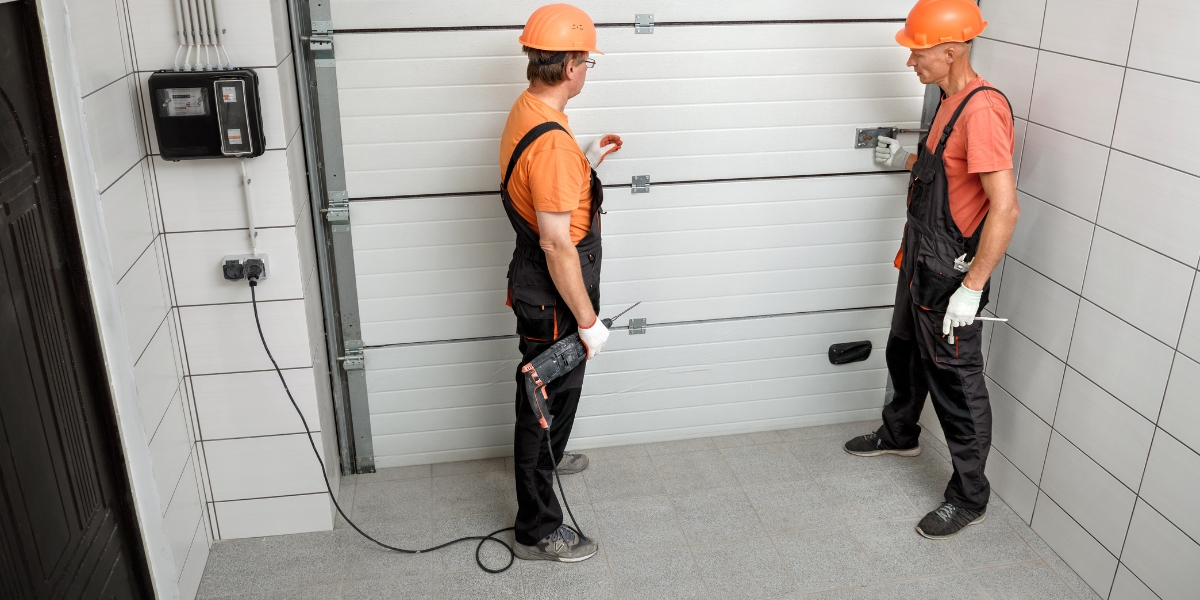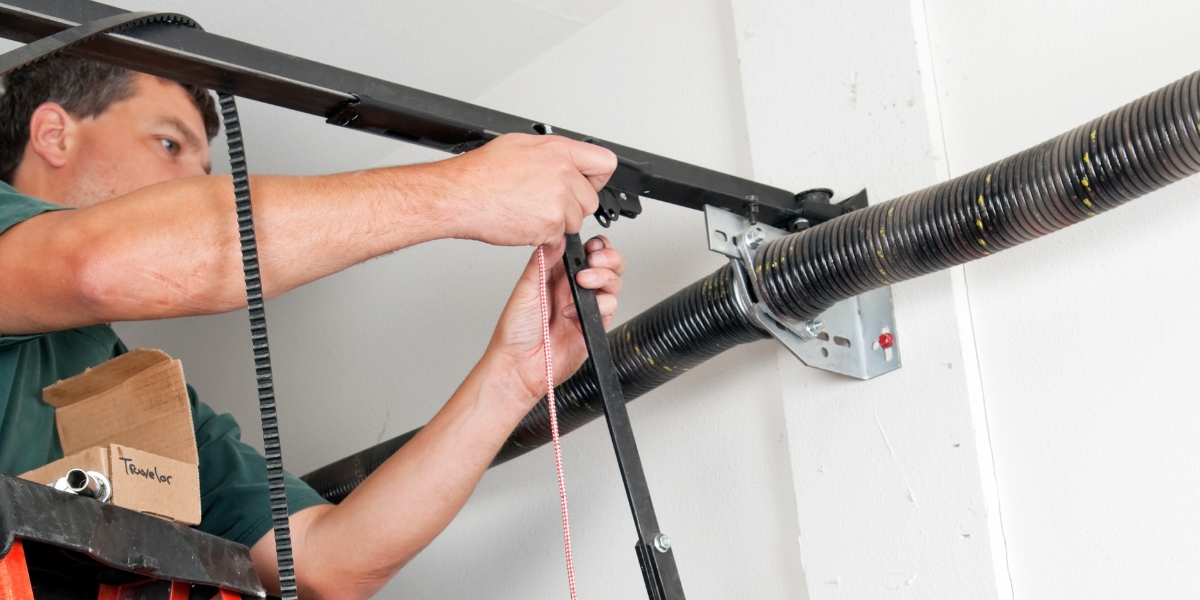Safety First: Essential Garage Door Maintenance Tips to Protect Your Family
The garage door is the largest, heaviest moving part of most homes. It sees frequent daily use and encounters dirt, debris, temperature fluctuations, and mechanical strain. Like any frequently operated system, regular inspection and maintenance are crucial to keeping your garage door safe and running for years.
This comprehensive guide covers everything homeowners need about garage door safety and upkeep. We’ll provide tips and how-to’s for:
– Visually inspecting components
– Testing essential safety mechanisms
– Establishing a routine maintenance schedule
– Knowing when to call the professionals for repairs
– Improving outdated garage door systems
– Answering common garage door FAQs
Follow these best practices for garage door care, and you’ll prevent injuries or accidents, reduce unexpected repairs, prolong your door’s lifespan, and boost your home’s weatherproofing and security. Let’s get started with understanding expected garage door repair costs and considerations.
Don’t Let Surprise Repair Bills Damage Your Wallet
Before diving into preventative garage door maintenance, let’s talk about why staying on top of inspections and service is essential for your wallet! Replacing major garage door components or hiring repairs can become very costly if problems are allowed to worsen over time.
We’ve Seen $100 Issues Become $1,000 Headaches
In our experience, minor problems that could have been fixed quickly for $100 if caught early often snowball into $800 – $1,200+ jobs involving multiple broken parts or entire system replacements. How does this garage door repair bill inflation happen? Here’s a typical example:
Loose or damaged pulleys that aren’t fixed promptly start chewing through cables ➡ Frayed cables start violently whipping around ➡ Frayed sections weaken and snap ➡ Broken cable slams into circuit boards or torsion springs ➡ Circuit boards short and need replacement, springs shatter and lose all tension.
What initially may have only required swapping a $15 pulley often cascades into a thousand-dollar opener and hardware replacements.
The key is catching minor issues through routine inspection and upkeep!
Garage Door Emergency Service Calls Cost More
Additionally, major garage door problems often strike at the worst times, which is suitable for when you need to rush to work on Monday morning or leave for a weekend trip. This forces you to call emergency weekend or after-hours repair services, which charge steeper hourly rates and drive up the final bill.
We recommend following this rule of thumb for typical garage door repair costs:
| Repair Type | Average Cost Range |
| :———- | :———- |
| Broken spring replacement | $200 – $350 |
| Bent track realignment | $150 – $250 |
| Opener gear/motor replacement | $350 – $550 |
| Frayed cable replacement | $100 – $200 |
| Off-track door rerouting | $70 – $150 |
These are general estimates only – unique home setups, door types, labor/part costs in your area, and damage extent can significantly alter prices.
Save Hundreds by Handling Basic Maintenance
Now, some good news – you can save hundreds of dollars each year by handling essential garage door preventative maintenance rather than calling the pros every time.
Quick DIY tasks like:
– Tightening loose hinges/brackets
– Spraying lubricant on rollers + pulleys
– Clearing debris from track sections
– Wiping grime off sensors
It can cost $10-15 in supplies, but avoid $100+ service calls. We’ll later teach you easy maintenance tips and tricks to handle safely on your own in this guide.
In the next section, let’s thoroughly inspect your garage door components to catch any current or impending problems.
Inspect Your Garage Door Inside and Out
Have you got your tools ready? Grab a flashlight, ladder, and notebook – it’s time to inspect your garage door system thoroughly. Catching deteriorated components early by consistently checking for warning signs of damage can help avoid costly emergency repairs.
When examining your garage door, we’ll walk through what to look, listen, and feel. Remember, safety first – consult a professional technician if any part of the inspection seems unsafe for your skill level.
Visually Assess Your Door’s Operation
First, observe your door moving through a few open and close cycles. Is the motion smooth without strange vibrations? Does it drift off track or move unevenly? Any grinding, screeching noises, or banging sounds?
Make notes on any odd movements or worrisome noises. We’ll address fixing them soon.
Next, do a walkaround when the door is stationary. Get eye level with each section – do you see:
- Cracks/dents in wood or warped panels?
- Rust spots or water damage on metal doors?
- Do you need to include heavily worn weatherstripping seals?
- Thin or cracked areas of the door?
Seal damage allows outside elements inside, leading to further deterioration and higher energy bills. Add replacements to your inspection notes.
Test the Auto-Safety Features
Before getting hands-on with systems under tension, first, confirm your garage door’s auto-safety features function correctly:
Auto-Reverse Test
1. Place a sturdy 1×4 piece of wood laid flat on the floor in the doorway’s path
2. Press the wall switch or remote button to close the door
3. The door should auto-reverse as soon as it contacts the wood
Adjust the opener’s force settings per manufacturer instructions if it doesn’t reverse. Still, needs to be fixed? A technician can examine the auto-reverse mechanism.
Photo Eye Test
1. With the door fully open, wave an object in front of the sensors
2. Operate door close cycle
3. The door shouldn’t move with object-blocking sensors
4. Clean dusty eye lenses if needed
Consult your device manual if the eyes need realignment or if the door doesn’t halt. Malfunctioning safety measures should be addressed immediately.
Thoroughly Check Garage Door Components
With safety tests completed, proceed carefully checking these systems:
Torsion Springs
Torsion springs (mounted horizontally above the door) provide lifting power. Warning signs:
- Visible cracks, frays, or bending
- Significant rust/corrosion
- One spring is looser than the others
- Grinding sounds during operation
Immediately discontinue use and call a technician if you spot any of these spring red flags. Only touch springs with proper training – they store immense energy and tension.
Cables
Cables attach to the bottom of the door and loop through pulleys as it opens/closes. Fraying or kinks require prompt replacement to avoid catastrophic failure.
Rollers
Inspect steel rollers for cracks/flat spots and verify they spin freely without wobbling. Bad rollers increase system strain and sound alarms through squeaking noises.
Hardware
Check hinges, joints, and brackets for loose screws or bolts needing to be tightened. Replace severely corroded parts.
You’ve just given your garage door a clean bill of health or identified areas needing service – nice work! Keep reading for proactive maintenance tips to keep systems running smoothly.
Keep Your Garage Door Purring With Regular TLC
Now, let’s dive into an essential piece of maximizing your garage door’s safe operation and lifespan – routine maintenance! We’ll provide tips to make upkeep fast and easy.
Consistently performing these essential tasks every 1-6 months will keep parts lubricated, bolts tightened, and components cleared of gunk buildup. You’ll extend the door’s longevity by years and prevent costly repairs.
Monitor your door’s condition and outside weather/debris factors to determine the optimal maintenance frequency. Garage doors in rainy climates or exposed to seasonal storms may need to be serviced more often.
Clean All The Things!
Leaves, seeds, spider nests, dust, and grime are garage door magnets. Let’s start maintenance with refreshingly simple cleaning!
Grab a tall ladder, soft brush, lint-free rags, vacuum, and flashlight. Make sure to work safely – don’t overextend arms/legs stretching to clean.
Attack exterior elements first:
- Clear piled-up debris around the door perimeter
- Vacuum dirt and cobwebs off overhead opener/hardware
- Brush debris off the door and sweep the garage floor
- Check drainage areas for clogs
Then wipe down these areas, focusing on crevices:
- Exterior panels
- Interior-facing sections
- Track sections
- Safety sensors
- Wall controls
Finish by clearing the tracks inside and out using the vacuum’s soft brush nozzle, watching for oil buildup. Avoid harsh household cleaners – soap and water works great.
Inspect and Tighten Hardware
During cleaning, peek behind openers and covers to spot loose fasteners. Grab your screwdrivers and sockets to snug down any found.
What Hardware should you check?
- Hinges
- Pulley mounts
- Sensor brackets
- Track bolts/screws
- Wall device mounts
Quick tightening helps components maintain proper alignment under vibration and strain. Refrain from overtightening – just a bit past finger tight works.
Lubricate Friction Points
Lubricant reduces grinding friction as parts slide past each other during opening cycles. Keep them slippery!
Use garage door lubricant spray or wipe designated lubrication points with a cloth soaked in liquid lubricant. Focus on:
- Steel rollers
- Side hinges
- Pivoting joints
- Locking mechanisms
- Pulley bearings
- Opener chain/sprocket
Avoid lubricating plastic idler bearings on modern doors – they utilize self-lubricating nylon. Tip: Hang an old rag behind moving components to catch overspray. Reapply lubricant every 4-6 months.
Confirm Proper Balance
When correctly balanced, a detached garage door with functioning Hardware should maintain its position. Follow this process:
1. Raise the garage door manually about halfway up the tracks
2. Slowly release – a balanced door holds the position
3. If it rapidly falls shut or drifts open, the torsion springs need adjusting
Garage door springs contain immense tension – only attempt adjustments if adequately trained and equipped. Call in a pro to rebalance and assess springs/cables correctly.
Keep practicing this preventative maintenance routine; your door will glide smoothly for 30k more cycles! Anything still concerning you? Next, we’ll cover when to request pro repairs.
Not Recommended as a DIY: Call the Pros
We’ve covered quick maintenance fixes and spring tension adjustments, which are high-risk.
But how do you determine when a garage door issue warrants hiring a trained service technician vs trying your remedy?
Use this guide to identify situations better left to the pros:
Torsion Springs
Damaged or worn springs are highly hazardous. Warning signs:
- Visible cracks or stretch marks
- Significant corrosion
- The door drifts up/down when released
- Uneven gaps between coils
Don’t risk getting seriously hurt – leave repairs for professionals with the expertise and tools to safely service springs.
Bent Tracks
If sections of the door track get bent out of shape from impact or ground settlement, the door can jump the rails.
Don’t force it to operate on damaged tracks!** Doing so adds friction and usually worsens bending. Safely:
1. Disengage automatic openers
2. Manually open the door a few feet
3. Block it open with a sturdy object
4. Call a technician to realign and replace deformed tracks
Frayed Cables
Fraying cables are hazardous – when individual wire strands break, the entire cable becomes compromised and can detach, sending a heavy garage door crashing down.
If you spot any cable fraying or kinks, immediately stop using the door opener until the cables get replaced by a pro. It’s the only safe option.
Opener Gear Damage
Clunking noises during opening/closing coupled with stuck or jerky operation likely point to stripped opener gears. The plastic drive gears wear over time – once they slip, the opener stops lifting efficiently.
DIY opener repairs are challenging, and the internal gears and motors are tricky to access. Let a technician handle the replacement.
Keep our contact info handy whenever you require prompt, honest service!
Modernizing for Improved Safety
If your garage door is over 20 years old, it likely lacks standard contemporary safety features that can prevent serious injury accidents.
Upgrading to a modern opener system and accessories enhances protection for your family, especially young children. Technology has rapidly advanced to introduce functionality that senses entrapment dangers.
Recommended Upgrades
Here are additions to prioritize:
Auto-reverse mechanisms – Reverses when closing door contacts an obstruction
Infrared photo eyes – Stops closing if beams detect an object
Motion detectors – Prevents door closing while movement is present
Push button placement – Wall controls mounted at a minimum of 5 feet high, away from kids
Many homeowners are surprised that their old chain-drive openers lack these safety functions. Treat your family by upgrading antiquated openers!
Seeking Even Safer?
Upgrade from conventional to battery backup openers for maximum protection – they’ll operate during power failures so the door can open in any emergency.
Smart garage door openers also now exist! Features like remote smartphone access, voice controls, and activity alerts take convenience and control to the next level.
Now, let’s move on to one of the most critical safety steps – recognizing when to call in a professional service technician.
Your Annual Garage Door Checklist
Print out this checklist to attach to your garage wall as a quick reference guide for yearly maintenance.
Keeping up with these periodic inspection and cleaning tasks will maximize longevity and safety. Review each category and check off items as you complete them.
You’ve got this! We believe in you!
Visual Assessment
– Inspect panels and windows for cracks/damage
– Check weather seals for gaps/tears
– Confirm door opens/closes smoothly without odd noises
Safety Component Checks
– Auto-reverse system test
– Photo eye sensor beam test
– Emergency release mechanism test
Maintenance Tasks
– Clear tracks of debris
– Tighten loose Hardware
– Lubricate rollers, bearings and moving joints
– Check torsion spring tightness and condition
– Inspect cables for fraying
Optional Enhancements
– Upgrade to monitored bright door
– Install supplemental outdoor lighting
– Add glass impact protection film
Be proud as you check off each item, knowing you’re proactively protecting your investment and family safety! Contact us anytime for professional assistance.
Got Garage Door Questions? We’ve Got Answers!
We get asked many great questions about picking the optimal garage door, operation issues, maintenance tips, and repair considerations. Below, we’ve compiled answers to some of the most common inquiries:
How often should I maintain my garage door?
Ideally, aim to inspect components and perform basic tasks like cleaning the tracks every 1-2 months. Quick spot checks for damage after significant storms are also intelligent.
For deeper maintenance like testing safety features, tightening Hardware, and lubricating moving parts, plan on servicing the door twice a year – spring and fall work well. Adjust the frequency based on the level of use and environmental factors.
What supplies do I need for DIY garage door maintenance?
Gather these affordable supplies for handling basic upkeep yourself:
- Multi-sized screwdrivers
- Socket wrench set
- Soft-bristle brush
- Lubricant spray + rags
- Flashlight
- Vacuum with brush nozzle
- Safety goggles & thick gloves
- Damp rags + mild detergent
How can I modernize and improve safety on an old garage door?
If your opener lacks auto-reverse mechanisms or infrared sensors, upgrading the control panel is wise to prevent accidents. Add Supplemental accessories like wireless keypads, motion detectors, and remote smartphone access for convenience.
For the door, confirm tracks are straight, hardware is tightened, and rollers spin freely. Consider adding glass impact protection film to strengthen windows against debris.
Why does my door make a loud squeaking noise sometimes?
Squeaks and whines typically stem from a lack of lubrication on moving metal parts, causing friction buildup. Clean and lubricate hinges, rollers, and opener chain tracks using garage door-specific lubricant spray. Silicone or WD-40 can attract more dust.
How should I balance test my garage door?
With power disconnected, manually raise the door about halfway, then gently release your grip. If balanced correctly, the door should maintain position instead of rapidly falling in one direction.
If it falls or drifts up on its own, the torsion spring system likely needs adjustment by a trained garage door technician.
Keep Your Garage Door Purring For Years
You made it! Now, you’re equipped with tips to keep your garage door operating safely for years through routine assessments, maintenance, and understanding when professional service calls become necessary. Remember, taking a proactive approach to your garage door’s care not only enhances its longevity but also ensures the safety of everyone in your household. For added functionality, consider exploring garage door insulation tips to improve energy efficiency and maintain comfortable temperatures inside your garage. By staying informed and attentive, you’ll enjoy a reliable and well-maintained garage door for the long haul.
Stay consistent about:
Inspecting components for early warning signs of damage
Testing safety features to ensure proper functionality
Clearing debris and lubricating friction points
Knowing your DIY service limitations
Keep our contact info handy, and feel free to leverage our decades of garage door expertise whenever something arises with your system that you need to address more.
Here’s to keeping your most significant home entryway secure, functional, and foolproof for decades! Thank you for your wallet and your family’s safety.
Let me know if you want me to expand or modify the conclusion section.



